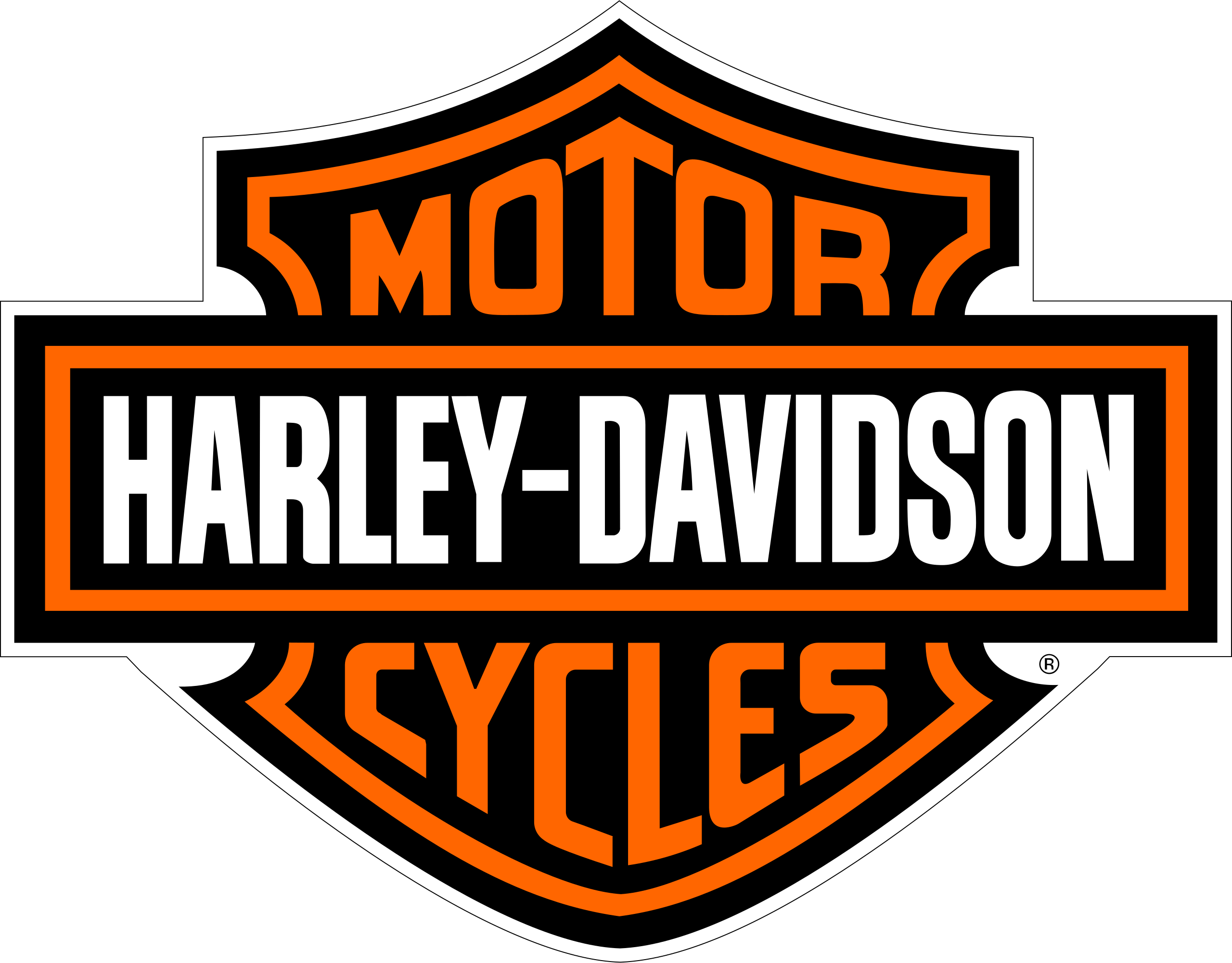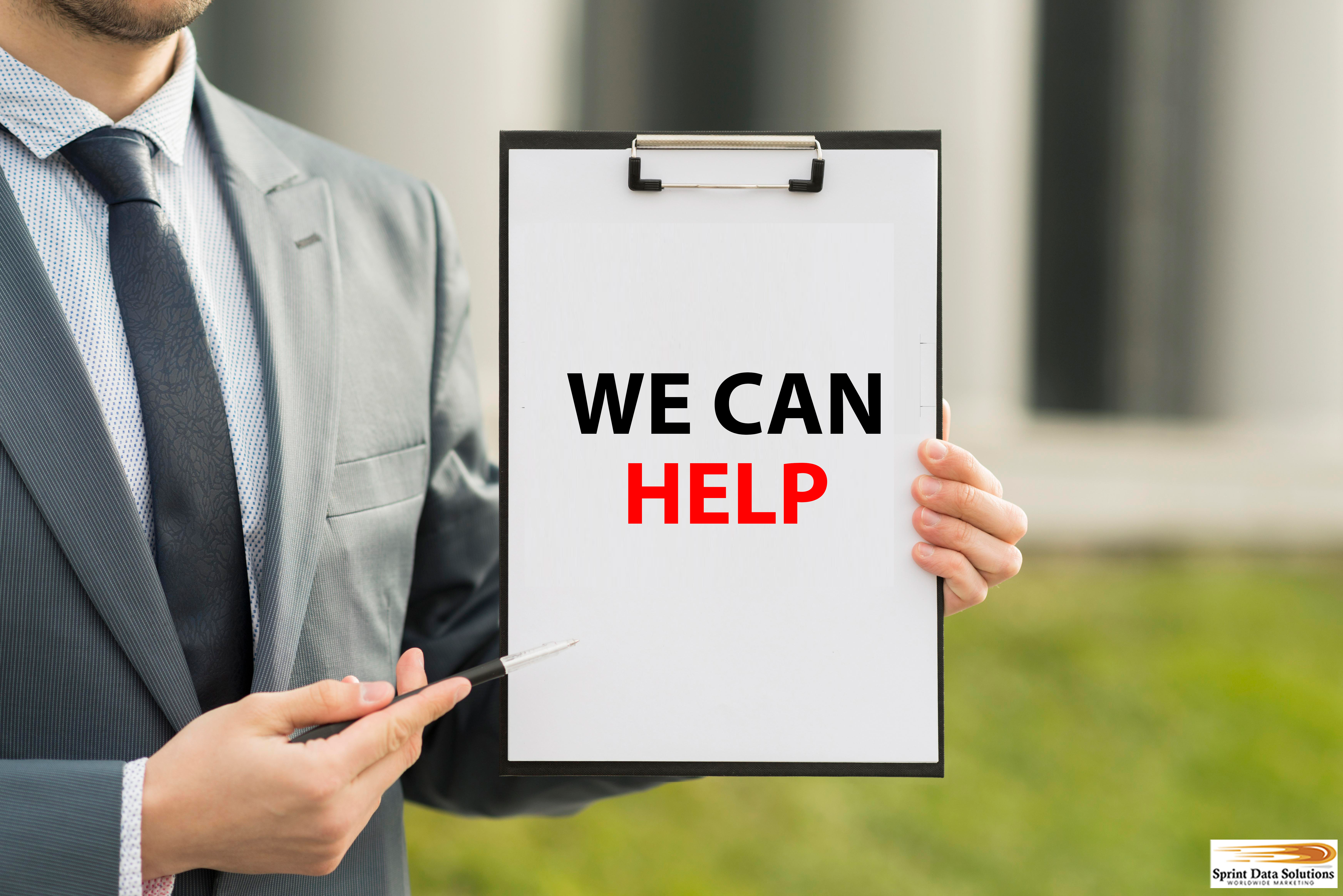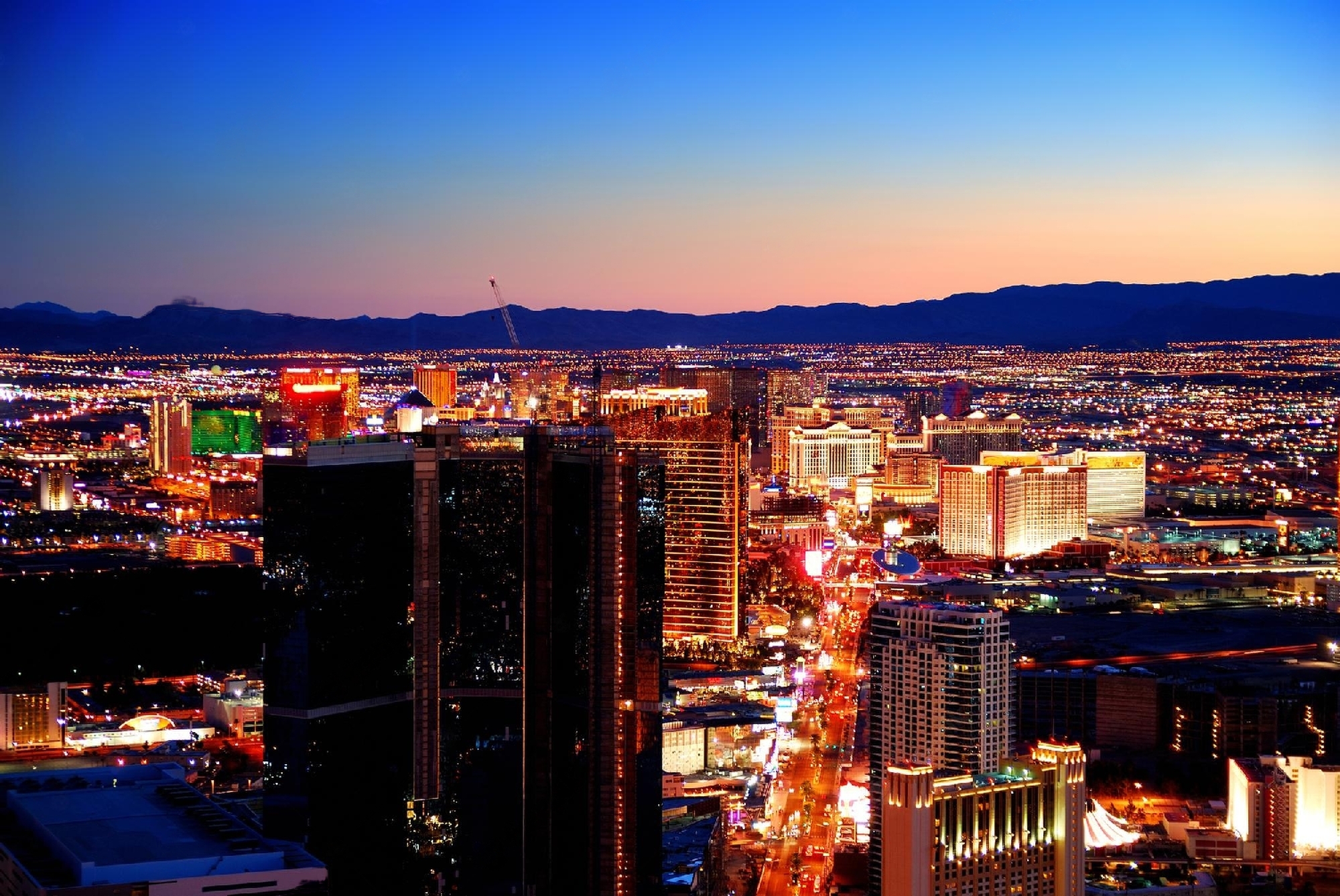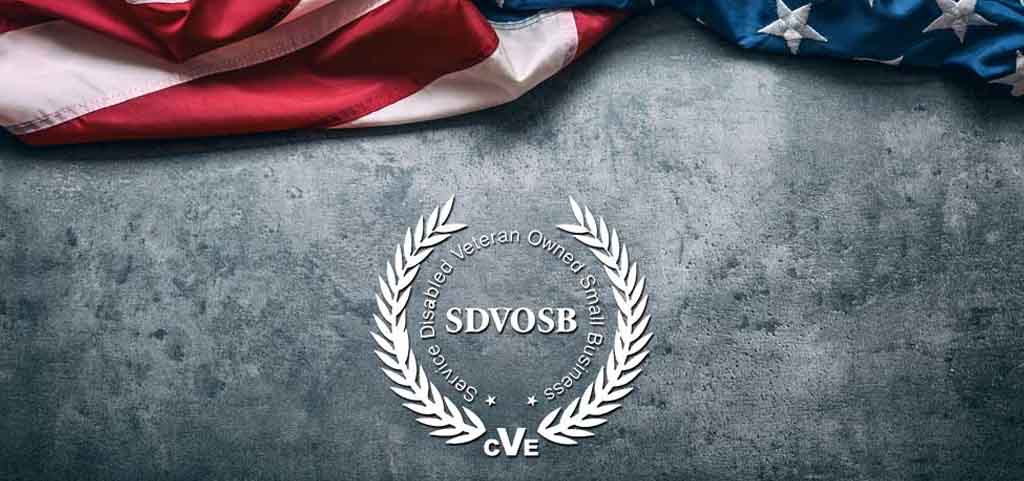Motorcycle Owners Are An Ideal Target Market For Your Business
Motorcycles have long been an iconic symbol of American freedom, embodying the spirit of adventure, independence, and a deep connection to the open road. For many riders, cruising along scenic highways, feeling the wind against their skin, and experiencing the thrill of acceleration is not just a pastime—it’s a way of life. Motorcycle enthusiasts come from all walks of life, but they often share common traits: they are hard-working, ambitious, and unafraid to challenge the status quo. Some riders seek the camaraderie of motorcycle clubs and nationwide events like Sturgis or Daytona Bike Week, where they can connect with like-minded individuals who share their passion for two wheels. Others rely on motorcycles for their practicality, offering a cost-effective and agile mode of transportation, particularly in congested urban environments. And, of course, there are those who are drawn purely to the adrenaline rush of speed and performance.
From a marketing perspective, motorcycle riders represent a lucrative but challenging demographic to reach. Their highly mobile lifestyle means they are less likely to engage with traditional marketing channels like direct mail or stationary advertisements. However, with the right approach, businesses can effectively tap into this market. Riders have strong brand loyalty, making them an ideal audience for targeted campaigns that resonate with their interests, whether it’s gear and accessories, insurance, motorcycle maintenance services, or lifestyle products. A high-quality motorcycle rider contact list enables direct engagement with this hard-to-reach audience, ensuring your products and services are placed directly in front of passionate, engaged consumers who are ready to buy. Instead of relying on passive marketing in the hope that they come across your brand, a targeted list gives you the power to proactively connect with them, boosting your outreach and driving real results.

There Are More Motorcycle Riders Than Ever Before
Motorcycle ridership in the United States has been on a steady upward trajectory, driven by advancements in motorcycle technology, the increasing popularity of motorcycle events, and the cultural influence of motorcycle clubs in films, television, and social media. Affordability remains a crucial factor, as rising fuel prices make motorcycles an appealing alternative to traditional vehicles. Additionally, a growing interest in adventure touring, sustainability, and electric motorcycles has introduced new demographics to the riding community. Industry analysts forecast continued expansion, with the global motorcycle market valued at $105.5 billion in 2021, projected to reach $233.5 billion by 2031—reflecting a compound annual growth rate (CAGR) of 8.6%. This growth suggests that the number of riders will likely double over the next decade. This trend aligns with historical data, as the U.S. motorcycle-riding population has already surged from 4.3 million in 2002 to 8.6 million in 2022. With an increasing number of women riders, younger urban commuters, and technology-driven innovations such as smart helmets and connected riding experiences, the motorcycle industry is set to evolve and expand even further in the coming years.
Demographics Of Motorcycle Riders
Motorcycle riders span every demographic legally permitted to ride, but certain trends define this market. Statistically, approximately 81% of riders are male and 19% are female, though female ridership is steadily increasing, particularly among younger generations. While riders range in age from their early 20s to their 70s, the median age of a motorcycle owner is around 50 years old. Roughly 70% of motorcycle riders are married, reflecting a stable lifestyle, and 42% hold at least a four-year college degree, with 16% having pursued post-graduate education. About 24% of motorcycle riders are retired, while 71% are employed full-time, earning an average household income of $85,300 per year.
Millennials represent the fastest-growing segment of motorcycle buyers, with a significant increase in interest in electric motorcycles, driven by sustainability concerns and advancements in EV technology. Urban dwellers are also showing increased adoption of smaller, commuter-friendly motorcycles as an alternative to cars, particularly in high-traffic areas.
Geographically, California leads the nation in total motorcycle registrations, with over 800,000 motorcycles registered. However, South Dakota has the highest number of riders per capita, with 1 in 12 residents owning a motorcycle, followed closely by Vermont, where 1 in 17 residents are motorcycle owners. The average age for purchasing a first motorcycle is 26, reflecting a balance between affordability and lifestyle integration.
Motorcycle riders engage in both on-road and off-road riding, with on-road riding being twice as common. Adventure touring and dual-sport motorcycles have fueled a surge in off-road riding, particularly among younger and middle-aged riders looking for recreational adventure. Collectively, motorcycles cover approximately 1.5 billion miles annually in the United States, showcasing the endurance and enthusiasm of this passionate demographic.
An Ideal Target Market For Many Industries
Motorcycle riders represent a highly active and passionate consumer market, consistently investing in their hobby through the purchase of motorcycles, gear, and accessories. Beyond their immediate riding needs, they also require a range of ancillary services, including specialized insurance, roadside assistance, and financing options tailored to motorcycle ownership. Additionally, their lifestyle often intersects with industries such as travel, hospitality, and outdoor recreation, as they seek accommodations, guided tours, and events that cater specifically to riders. With a strong preference for customization, performance upgrades, and safety enhancements, motorcycle enthusiasts remain a lucrative audience for businesses that understand their unique needs and spending habits.
Here are some industries that could benefit from a motorcycle rider list.
Auto Insurance
Motorcycle riders travel long distances across state lines, making it crucial to have insurance policies that provide seamless protection wherever they go. A well-rounded motorcycle insurance policy typically includes standard coverages such as bodily injury liability (BI) to cover injuries caused to others and property damage liability (PD) for damage to other vehicles or property. Because accidents involving motorcycles can be severe, uninsured/underinsured motorist (UM/UIM) coverage is essential to protect riders if they’re hit by a driver without sufficient insurance.
Riders who own newer, customized, or high-value motorcycles often opt for comprehensive and collision coverage—commonly referred to as “full coverage.” Comprehensive insurance protects against non-collision-related incidents like theft, vandalism, fire, or natural disasters, while collision coverage helps pay for repairs or replacement if the bike is damaged in an accident.
Some states legally require medical payments (MedPay) or personal injury protection (PIP) to cover medical expenses for the rider and passengers, regardless of fault. Even in states where it’s optional, these coverages provide financial security in case of injury. Many riders also seek additional protection to enhance their policy, such as roadside assistance for unexpected breakdowns, trip interruption insurance to cover lodging and meals if an accident happens far from home, carried contents coverage for personal belongings stored on the bike, and replacement custom parts and equipment (CPE) insurance to safeguard aftermarket upgrades like saddlebags, custom seats, and chrome accessories.
Choosing the right combination of coverages ensures that motorcycle riders have financial protection for themselves, their bikes, and others on the road—no matter where their journey takes them.
Life Insurance
Motorcycle riding carries inherent risks, with approximately 5,000 fatalities occurring annually due to motorcycle accidents. Given that nearly 75% of riders have families, ensuring their loved ones are financially secure in the event of an accident is a top priority. Life insurance policies serve as a crucial safety net, providing financial protection to cover expenses such as mortgage payments, education costs, and daily living expenses if a rider passes away unexpectedly. Many motorcyclists recognize the importance of having adequate coverage to safeguard their family’s future. Additionally, riders who engage in racing—whether at an amateur or professional level—face heightened risks and can benefit from specialized insurance policies that offer extended coverage, such as accidental death benefits or disability protection. Tailoring a life insurance policy to a rider’s specific lifestyle ensures that both their personal risks and their family’s financial security are properly addressed.
Travel
The travel and hospitality industries stand to gain significant advantages from a well-curated motorcycle rider marketing list. Motorcycle enthusiasts are passionate about scenic travel, often favoring routes that offer breathtaking landscapes, winding roads, and hidden gems that are off the beaten path. These riders are not just commuters—they are adventure seekers who enjoy exploring historical landmarks, nostalgic Americana sites, and natural wonders. Businesses in the tourism sector, particularly those associated with cultural and heritage tourism, can see substantial benefits by targeting this audience. Local museums, historical battlefields, lighthouses, ghost towns, and other points of historical interest frequently attract motorcyclists, especially those who enjoy themed road trips centered around history and culture. Likewise, national and state parks, as well as scenic byways, are prime destinations for motorcycle riders seeking unforgettable experiences. Riders also have an affinity for unique roadside attractions, whether it’s a world-famous monument or a quirky, small-town curiosity, and they are often enthusiastic souvenir buyers who enjoy collecting memorabilia from their travels.
The hospitality sector is another industry that can capitalize on this market. While some motorcyclists prefer the rugged experience of camping, many others seek comfortable accommodations during their long-distance travels. Campgrounds, KOAs, and backcountry camping spots are appealing to adventure riders and those who favor an outdoor experience. However, a large segment of motorcycle travelers prefers hotels, motels, short-term rentals, and resorts that cater to their specific needs. Motorcycle-friendly lodging options—those that offer secure, well-lit parking, garages, or designated bike-friendly areas—are highly desirable. Hotels and resorts that provide amenities such as complimentary breakfasts, laundry facilities, on-site restaurants, and even spa services appeal to riders looking to relax after long hours on the road. Group-friendly accommodations are particularly valuable, as many motorcyclists travel in clubs or organized tour groups. Resorts and hotels that acknowledge these preferences, offering packages for riders or partnerships with local motorcycle rental and tour services, can significantly increase their appeal within this niche market.
By leveraging a motorcycle rider marketing list, businesses in the travel and hospitality industries can craft highly targeted promotions, ensuring that they reach an audience that is actively looking for new destinations, accommodations, and travel experiences tailored to their passion for the open road.
Smart Devices
Smart devices play a crucial role in enhancing the travel experience for motorcycle riders, offering convenience, safety, and entertainment on the road. Communication devices like Bluetooth headsets allow riders to stay in touch with fellow travelers, take hands-free calls, and even listen to navigation prompts without distractions. GPS systems, specifically designed for motorcycles, provide real-time route guidance, weather updates, and traffic alerts to help riders navigate efficiently. Additionally, cell phones with extended coverage, including satellite communication options, ensure riders stay connected even in remote locations where traditional networks may fail.
Motorcycle riders also appreciate advanced automotive maintenance gadgets that improve safety and reduce roadside inconveniences. Portable tire inflators with digital pressure monitoring help prevent flats, while compact battery chargers and jump starters ensure reliable ignition in various weather conditions. Malfunction sensor technology, which integrates with smartphone apps, allows riders to monitor engine diagnostics and receive alerts about potential mechanical issues before they escalate.
Beyond functional tools, many riders seek high-tech accessories to enhance their journey. Action cameras like GoPros allow motorcyclists to capture scenic rides and document their adventures, while heated clothing, such as battery-powered gloves and jackets, ensures comfort during cold-weather rides. Power banks and solar chargers provide on-the-go charging solutions for multiple devices, ensuring riders remain powered up during long trips. As technology continues to evolve, smart devices tailored to motorcyclists are becoming essential, improving both safety and the overall riding experience.
Mechanical Tools And Accessories
Many motorcycle riders are also skilled mechanics, not just out of passion but out of necessity. Unlike car drivers, who can often rely on roadside assistance, motorcyclists must be prepared to handle breakdowns on their own—especially when riding through remote areas with limited service options. That’s why portable tool kits are an essential part of any rider’s gear, containing compact yet versatile tools that can handle emergency repairs on the go. In addition to standard vehicle repair tools like wrenches, socket sets, tire irons, and pliers, riders often carry motorcycle-specific tools such as chain breakers, alignment tools, and spoke wrenches to ensure smooth operation. Many also invest in lift tables and paddock stands to simplify maintenance at home. Equally important are the specialty fluids needed to keep a motorcycle in peak condition, including high-performance engine oil, chain lubricant, fork oil for suspension upkeep, and brake fluid. Given the unique demands of motorcycle travel, having the right tools and supplies on hand is not just convenient—it’s often the difference between continuing a journey and being stranded.
Storage
In regions where motorcycle riding is seasonal, particularly in the northern climates, riders often face the challenge of properly storing their bikes during the off-season. Similarly, off-road riders who only take their motorcycles out for recreational use need secure storage options when their vehicles are not in use. Many of these riders turn to rented storage units to protect their motorcycles from harsh weather conditions, theft, and damage. To ensure their bikes remain in top condition, they frequently invest in essential storage accessories such as dust covers to prevent dirt buildup, oil pans to catch leaks and drips, and motorcycle jacks to keep tires from developing flat spots over long periods of inactivity. Additionally, owners of collectible, vintage, or rare motorcycles require premium storage solutions with high-security measures, including climate-controlled environments, advanced surveillance systems, and access-controlled units. This presents a valuable opportunity for storage unit facilities, particularly those that offer enhanced security features, specialized motorcycle storage solutions, and amenities tailored to the needs of motorcycle enthusiasts. By marketing to this demographic and highlighting the benefits of secure, long-term storage options, storage companies can position themselves as the go-to choice for riders looking to protect their investments.
Motorcycle Apparel
Motorcycle riders require a wide range of specialized apparel tailored to both safety and comfort. Essential riding gear includes DOT- or Snell-approved helmets for head protection, armored jackets made from leather or textile materials with CE-rated padding for impact absorption, and reinforced gloves designed to provide grip, warmth, and abrasion resistance. Proper riding boots with non-slip soles and ankle protection help safeguard against injuries, while padded riding pants or Kevlar-lined jeans offer added defense against road rash. Beyond safety gear, riders need apparel that protects them from harsh weather conditions, such as thermal base layers for cold-weather riding, moisture-wicking skull caps and balaclavas to keep sweat away, and gaiters or waterproof overalls for rainy conditions. Many motorcyclists also prefer casual wear that reflects their passion, such as graphic motorcycle t-shirts, classic leather jackets, denim riding shirts, and branded vests that display club affiliations or personal style. Tactical and tech gear, such as utility vests with extra pockets for tools, hydration packs for long rides, and weatherproof saddlebags for carrying essentials, are also popular for their practicality. Additionally, proper storage solutions like helmet hooks, boot racks, and motorcycle gear cabinets help riders organize and maintain their apparel, ensuring everything stays in peak condition for the next ride.
Motorcycle Parts
Motorcycle riders take great pride in expressing their individuality, and one of the most prominent ways they do so is through customizing their bikes. Aftermarket motorcycle parts are in high demand, as they allow riders to enhance performance, comfort, and safety while also giving their bikes a unique, personalized touch. Whether upgrading exhaust systems for better horsepower, installing custom handlebars for improved ergonomics, or adding LED lighting for better visibility, riders invest heavily in modifications. Additionally, many motorcycle enthusiasts are skilled amateur or professional mechanics who prefer to handle their own repairs and routine maintenance. This DIY approach fuels a strong demand for replacement parts, high-performance upgrades, and specialized tools. Some riders take their passion further by engaging in full-scale restoration projects, meticulously refurbishing vintage motorcycles to their original condition or transforming them into modernized classics. As a result, the vintage motorcycle parts market remains highly active, catering to collectors and enthusiasts searching for rare components, OEM parts, and period-correct accessories to maintain the authenticity of their classic bikes.
Motorcycle Accessories
Motorcycle accessories are an essential part of a rider’s experience, offering both functional benefits and personal expression. Functional accessories enhance safety, convenience, and comfort, with popular items including high-tech security systems like GPS trackers and smart locks, ergonomic comfort grips to reduce hand fatigue on long rides, reinforced kickstand pads for stability on uneven surfaces, and cargo add-ons such as saddlebags, tank bags, and tail racks for improved storage capacity. Many riders also enjoy adding personality to their bikes with humorous accessories, such as quirky helmet mohawks, novelty valve stem caps featuring skulls or dice, and witty decals that showcase their sense of humor or riding philosophy. Beyond the bike itself, motorcycle enthusiasts love lifestyle accessories that reflect their passion, including custom keychains, branded bumper stickers, insulated travel mugs for road trips, and even leather wallets or belts embossed with motorcycle-themed designs. Whether for practicality or self-expression, motorcycle accessories are an integral part of the riding culture.
Cleaning Supplies
Motorcycle riders take immense pride in their bikes, treating them as more than just transportation—they’re an extension of their personality and lifestyle. They invest significant time, effort, and money into customizing and maintaining their motorcycles, ensuring they always look and perform their best. As a result, cleaning and detailing are essential aspects of motorcycle ownership. Basic tools such as buckets, soft-bristle brushes, microfiber cloths, and high-pressure hoses are must-haves for a thorough wash without damaging delicate components. Specialized cleaning supplies, including degreasers for the chain, brake dust removers, and pH-balanced soaps, help keep every part of the bike in top condition. Riders also demand high-quality wax polishes, ceramic coatings, and UV protectants to maintain their bike’s paint, chrome, and metal finishes. Many go beyond simple cleaning, using precision detailing tools like fine-tipped brushes, compressed air blowers, and specialty applicators to reach tight spaces and intricate components. With a focus on both aesthetics and long-term preservation, motorcycle enthusiasts constantly seek premium cleaning products that deliver showroom-quality results.

Harley Davidson Motorcycle Riders And More!
Harley-Davidson remains the leading motorcycle manufacturer in the United States, holding the largest market share at 30.6%. Known for its powerful cruisers and touring bikes, Harley-Davidson has cultivated a loyal customer base that spans generations. Honda follows as the second most popular manufacturer, capturing 17.5% of the U.S. market, largely due to its diverse lineup, including sport bikes, cruisers, and adventure motorcycles. Yamaha ranks third with 11.3% of the market, offering a mix of high-performance sport bikes, off-road models, and reliable commuter motorcycles. Kawasaki and Suzuki maintain strong followings, particularly among sportbike and motocross riders, while BMW has gained traction with adventure and touring enthusiasts. Other well-recognized brands rounding out the top ten most popular motorcycle manufacturers in the U.S. include Indian, Ducati, Triumph, and Moto Guzzi, each appealing to specific segments of the market, from American-style V-twin lovers to European performance enthusiasts.
The Honda Super Cub remains the most popular motorcycle of all time, with over 100 million units sold worldwide, thanks to its affordability, fuel efficiency, and ease of use. This model has played a significant role in shaping global motorcycle culture, making two-wheeled transportation more accessible than ever.
Our motorcycle rider database is one of the most comprehensive on the market, featuring motorcyclists from every riding category, including cruisers, sportbikes, touring bikes, off-road motorcycles, and custom builds. Not only does our list provide verified contact details, but it also includes valuable data about each rider’s motorcycle, such as the year, make, model, and VIN. This level of detail allows for highly targeted marketing campaigns, ensuring that businesses can reach motorcycle owners with products and services that align with their specific riding preferences. Whether you’re targeting Harley-Davidson riders, sportbike enthusiasts, or adventure touring riders, our database provides the insights needed to make direct and effective connections.
The Different Types of Motorcycle Riders
Motorcycle riders generally fall into two broad categories based on their usage patterns and lifestyle preferences. The first category consists of riders who use motorcycles as their primary form of transportation. These individuals often reside in urban areas where traffic congestion makes motorcycles a practical and fuel-efficient alternative to cars. They are also more commonly found in regions with warm or temperate climates, where year-round riding is feasible without the need for extensive cold-weather gear. These riders prioritize reliability, fuel efficiency, and ease of maneuverability, often opting for commuter-friendly models such as standard motorcycles, scooters, or lightweight cruisers.
The second category consists of recreational or “weekend” riders who primarily use motorcycles for leisure rather than daily commuting. These riders often own cars or trucks for their regular transportation needs and take their motorcycles out for weekend trips, scenic rides, or social gatherings with fellow enthusiasts. Weekend riders are more common in suburban and rural areas, where open roads and scenic landscapes provide ideal conditions for recreational riding. They also tend to live in regions with seasonal climates, making motorcycle use a fair-weather activity. Many of these riders gravitate toward touring bikes, cruisers, sport bikes, or custom motorcycles, valuing style, performance, and the overall riding experience over practicality.
Motorcycle riders are a diverse group with varied preferences, spanning multiple brands and riding styles. While Harley-Davidson is often associated with the image of the classic rider, many enthusiasts favor other iconic brands like Indian, Honda, Ducati, Yamaha, and BMW, each of which has cultivated its own dedicated following. The popularity of motorcycles has given rise to distinct subcultures, from cruiser aficionados and café racer enthusiasts to adventure bikers and sportbike riders who thrive on speed and precision. These subcultures influence everything from gear and fashion to events and community gatherings, shaping the broader motorcycle culture in unique ways. These include:
Choppers, Cruisers, And Lowrider Riders
Choppers, cruisers, and lowriders are among the most customized motorcycles, often costing significantly more than standard showroom models due to extensive modifications and premium aftermarket parts. These bikes typically feature an extended wheelbase, which enhances rider comfort on long highway rides but reduces maneuverability, making them less ideal for tight urban spaces or aggressive cornering. Riders of these motorcycles are usually highly skilled mechanics who take pride in maintaining and customizing their bikes, often handcrafting unique features such as elongated forks, custom paint jobs, chrome detailing, and intricate leatherwork. Many are members of motorcycle clubs and enthusiast groups, frequently attending major rallies like Sturgis, Daytona Bike Week, and regional chopper shows. Their passion for classic designs is rooted in the aesthetics of mid-20th-century motorcycles, drawing inspiration from the golden era of American motorcycling, including iconic brands like Harley-Davidson and Indian. These riders embrace the spirit of open-road freedom, strong camaraderie, and a deep appreciation for the history and culture of motorcycles, often incorporating vintage Americana themes into their bikes and gear.
Touring And Sport-Touring Riders
Touring and sport-touring motorcycles are specifically designed for riders who cover long distances, offering superior comfort, ample storage, and enhanced safety features. These bikes typically come equipped with large fuel tanks, ergonomic seating, and advanced suspension systems to reduce fatigue on extended journeys. They also feature comprehensive weather protection, including windshields and fairings, to shield riders from rain, wind, and road debris. Sport-touring motorcycles, while retaining the comfort and storage benefits of touring bikes, incorporate sportier handling, higher-performance engines, and upgraded braking systems, making them more versatile for various road conditions, including winding mountain passes and less-maintained highways. Many riders choose these motorcycles for daily commuting as well, appreciating their stability, smooth ride, and additional safety technologies like traction control and ABS. Due to their larger size, premium materials, and advanced features, sport-touring bikes tend to be among the more expensive motorcycle categories, attracting serious riders who prioritize performance and long-distance travel capabilities.
Cafe Racers
Café racers have surged in popularity among Millennials and Gen Z riders, drawn to their minimalist, vintage aesthetic and DIY-friendly customization potential. These motorcycles are often built from affordable donor bikes, such as the Honda CB series, Yamaha XS models, and used British and Japanese motorcycles from the 1950s to 1970s. Unlike factory-built models, café racers emphasize stripped-down, lightweight designs with low-slung handlebars, rear-set foot pegs, and elongated fuel tanks for a more aggressive riding stance. Many riders are skilled mechanics, frequently modifying their bikes with aftermarket parts, performance upgrades, and custom fabrications, creating demand for specialty tools and hard-to-find vintage components.
Inspired by the British rocker subculture of the 1950s and 1960s, café racers were originally built for speed and short-distance sprints between cafés and roadside diners. This historical influence remains strong, with modern riders embracing mid-century fashion trends, including leather jackets, open-face helmets, vintage gloves, and minimalist riding gear that complements the bike’s aesthetic. These motorcycles are not designed for long-distance touring, as their aggressive ergonomics prioritize style and speed over comfort. Instead, café racers are most commonly used for city riding, short joyrides, and informal races on urban roads, making them a staple in the custom motorcycle culture and an ideal choice for those who appreciate both form and function.
Sport Racers
Sport racers are among the lightest and most powerful motorcycles available, built with aerodynamic designs, high-revving engines, and advanced suspension systems to maximize speed and handling. These bikes are widely used in both amateur and professional racing circuits, attracting riders who thrive on adrenaline and performance. While their aggressive riding posture and stiff suspension make them less comfortable for long-distance travel, they excel in short, high-speed bursts on tracks or winding roads. Sport racers are not just about raw power—they also appeal to a rider’s sense of style and individuality. Many enthusiasts invest heavily in aftermarket upgrades, including performance exhaust systems, carbon fiber fairings, and ECU tuning to enhance speed and responsiveness. Aesthetically, sportbike riders favor custom wraps, LED underglow kits, and high-visibility decals to make their bikes stand out. Safety is a top priority, given the extreme speeds these motorcycles can reach, so riders often wear state-of-the-art protective gear, such as full-body armored suits, aerodynamic helmets, and high-grip racing gloves. The sportbike community skews younger, often consisting of tech-savvy riders who embrace digital enhancements like Bluetooth-connected helmets, GPS lap timers, and advanced riding analytics to refine their skills and optimize their performance.
Dual Sport And Motocross Riders
Dual sport and motocross riders primarily spend their time riding off-road, often navigating rugged trails, dirt tracks, and open landscapes. Dual sport motorcycles are designed for both on-road and off-road use, making them popular among riders who live in urban and suburban areas but frequently venture into nature for weekend rides or long-distance adventures. These riders enjoy the versatility of their bikes, allowing them to commute on city streets while still having the capability to tackle off-road terrain. On the other hand, motocross riders are typically found in exurban and rural regions where they have more space to ride freely without restrictions. Many of these riders participate in organized motocross races, hill climbs, enduro competitions, and other off-road sports that test their endurance and technical skills.
Both dual sport and motocross riders are highly skilled in bike maintenance and mechanics, often modifying their motorcycles to enhance performance, durability, and safety. Many engage in restoration projects, rebuilding older models or upgrading suspension systems, tires, and exhaust systems to improve off-road capability. Advanced safety gear is essential for these riders, as they frequently face rough terrain and high-speed jumps. Their protective equipment often includes reinforced helmets, neck braces, body armor, knee braces, and high-quality riding boots to prevent injuries during crashes or hard landings. Whether riding competitively or recreationally, dual sport and motocross enthusiasts are passionate about pushing the limits of their machines and honing their technical skills both on and off the bike.

We’ll Help You Access This Growing Market
Sprint Data Solutions Worldwide Marketing is a Service-Disabled Veteran-Owned business founded in Las Vegas with a commitment to providing high-quality, data-driven marketing solutions. We maintain one of the largest and most comprehensive databases available, offering an extensive range of specialty lists designed to maximize your marketing ROI through precise targeting.
Our motorcycle riders list is one of the most detailed and highly segmented databases in the industry, providing demographic, psychographic, and lifestyle insights on motorcycle enthusiasts. This list includes detailed vehicle information such as the make, model, year, and VIN of each motorcycle, allowing businesses to target riders based on their specific preferences, riding habits, and brand loyalty. Whether you’re marketing motorcycle insurance, aftermarket parts, riding gear, or event promotions, our data allows for hyper-personalization, helping you connect with the right audience at the right time.
At Sprint Data Solutions Worldwide Marketing, we adhere to strict data collection protocols to ensure the highest possible level of accuracy and reliability. Our lists are routinely updated and verified through industry-leading certification systems, including the National Change of Address (NCOA) and the Certified Address Accuracy System (CAAS). Additionally, all data undergoes multiple screening checks to maintain quality, consistency, and precision, ensuring that your marketing campaigns reach only the most relevant and engaged prospects.
With decades of expertise in direct mail, digital marketing, and lead generation, Sprint Data Solutions Worldwide Marketing helps businesses reduce waste, optimize outreach, and improve response rates through highly targeted and data-driven marketing solutions. When you need precision, accuracy, and results, trust Sprint Data Solutions Worldwide Marketing to deliver.
Target The Right Motorcycle Riders For Your Campaign
With our extensive database and meticulous verification process, you can confidently connect with the right motorcycle riders. Our motorcycle rider lists are segmented by a range of demographic, behavioral, and geographic data points, allowing you to fine-tune your marketing approach and craft highly relevant messaging. Whether you’re targeting sportbike enthusiasts, touring riders, weekend cruisers, or professional commuters, we provide the insights you need to optimize your outreach. Our experienced team will work closely with you to navigate the data, ensuring you maximize the return on your investment.
No matter your preferred marketing channel—direct mail, email campaigns, SMS messaging, telemarketing, or data-driven market research—our lists will empower you to engage motorcycle riders nationwide with precision and efficiency. If you’re ready to elevate your marketing strategy, reach out to Sprint Data Solutions Worldwide Marketing today. Our dedicated professionals are here to help you achieve measurable success and grow your customer base.






